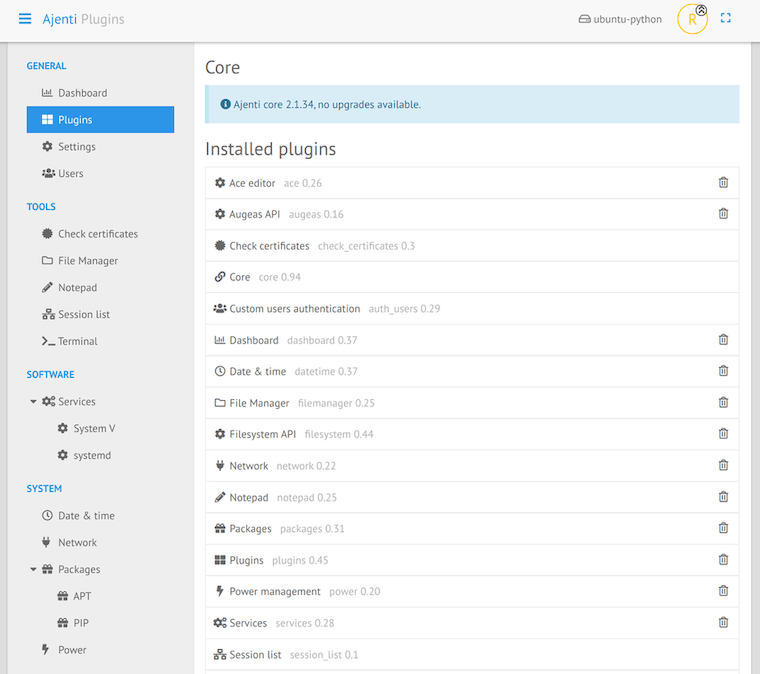
In this tutorial, we will show you how to install Ajenti Control Panel on CentOS 8. For those of you who didn’t know, Ajenti is a hosting control panel that allows you to set up a website very easily. It comes with a clean and modern interface, so setting up application servers, databases and routing should not be difficult at all. Moreover, it comes with great language support. Using Ajenti, you can set up applications written in PHP (PHP-FPM), Python (WSGI), Ruby, and Node.js in no time. Exim 4 and Courier IMAP are automatically configured so you can use virtual e-mails, DKIM, DMARC, and SPF. This control panel is written in Python and runs on multiple Linux distributions.
This article assumes you have at least basic knowledge of Linux, know how to use the shell, and most importantly, you host your site on your own VPS. The installation is quite simple and assumes you are running in the root account, if not you may need to add ‘sudo‘ to the commands to get root privileges. I will show you the step-by-step installation of the Ajenti Control Panel on CentOS 8.
Prerequisites
- A server running one of the following operating systems: CentOS 8.
- It’s recommended that you use a fresh OS install to prevent any potential issues.
- A
non-root sudo useror access to theroot user. We recommend acting as anon-root sudo user, however, as you can harm your system if you’re not careful when acting as the root.
Install Ajenti Control Panel on CentOS 8
Step 1. First, let’s start by ensuring your system is up-to-date and install all required dependencies.
sudo dnf install epel-release sudo dnf update sudo dnf install gcc python3-devel python3-pip python3-pillow python3-augeas python3-dbus chrony openssl-devel redhat-lsb-core
Step 2. Installing Ajenti Control Panel on CentOS 8.
- Automatic Installation.
Now run the following command:
curl https://raw.githubusercontent.com/ajenti/ajenti/master/scripts/install.sh | sudo bash -s -
- Manual Installation.
Now we add repository key Ajenti from the official source:
wget http://repo.ajenti.org/ajenti-repo-1.0-1.noarch.rpm rpm -i ajenti-repo-1.0-1.noarch.rpm
Once done, install Ajenti using the following command:
sudo dnf install ajenti
Once successfully installed, now we start the service:
sudo systemctl start ajenti
Step 3. Configure firewall for the Anjeti control panel.
Now enabling that port from the firewall will allow us to login into the web interface of the Ajenti server. In order to open port 8000, we’ll need to run the following commands:
sudo firewall-cmd --permanent --zone=public --add-port=8000/tcp sudo firewall-cmd --reload
Step 4. Accessing Anjeti control panel on CentOS.
Anjeti will be available on HTTP port 8000 by default. Open your favorite browser and navigate to http://your-domain.com:8000 or http://server-ip-address:8000 and enter the default username “admin” or “root” and password is “admin“.

Congratulations! You have successfully installed Ajenti. Thanks for using this tutorial for installing Ajenti Control Panel on your CentOS 8 system. For additional help or useful information, we recommend you check the official Ajenti website.